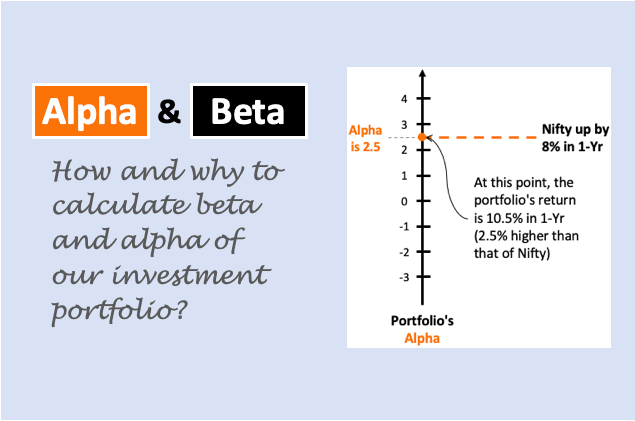Dividend income is a stream of earnings paid by companies to shareholders, representing a share of the company’s profits. It’s typically paid quarterly or annually, based on each share held, and can be an excellent way to earn a steady cash flow from your stock investments.
For investors seeking passive income, dividends offer a unique appeal. Unlike other forms of income, dividends don’t require ongoing work or additional investments to grow. Once you invest in the right stocks, dividends keep rolling in, allowing you to build a source of income that complements your salary or business income.
Dividend income is particularly attractive to investors looking to achieve financial independence. As these payouts can provide regular returns without selling stocks, they enable you to build wealth over time. Dividend focused investors often reinvest the dividends earned to further compound their gains. This strategy allows investors to get closer to financial goals, whether it’s supplementing income, saving for a future milestone, or eventually replacing a paycheck with passive income.
In India, dividend investing is gaining popularity among young investors who want to establish financial security. With the right approach, dividend income can be a step toward financial freedom, helping you make your money work for you.
Topics
1. Setting a Dividend Income Goal: Rs.1 Lakh per Month
One of the most common goals among dividend investors is achieving a specific monthly income target. For many in India, Rs 1 lakh per month from dividends is a meaningful amount. It could help cover major expenses or even enable financial independence.
But how much do you need to invest to reach this goal?
1.2 How Much to Invest for Rs 1 Lakh Monthly Dividend Income
To understand this, let’s break it down using some basic math.
Suppose you’re targeting stocks with an average annual dividend yield of 4–5%. Dividend yield is the percentage return a company pays out in dividends relative to its stock price.
So, to reach Rs 1 lakh per month—or Rs 12 lakhs annually—you would need to build a portfolio that generates this amount through dividends alone.
Here’s a rough calculation:
- For a 4% dividend yield: You’d need an investment of around Rs 3 crore (12,00,000 / 4%).
- For a 5% dividend yield: You’d need an investment of around Rs 2.4 crore (12,00,000 / 5%).
These calculations show that reaching Rs 1 lakh per month is indeed possible but requires substantial capital.
It is also important to note that, in India, a first time investor’s stock portfolio will not earn a dividend yield of more than 1% per annum. Over time (in next 5-6 years), as the size of the stock portfolio will grow, the dividend yield will also grow.
Expecting a dividend yield of about 5% after 5 years of continual investing is a practical assumption.
1.2 Key Factors Impacting the Required Investment
- Stock Selection: The exact amount you need to invest will depend heavily on the stocks you choose. Some sectors, like utilities and REITs, are known for higher dividend yields. While others, like tech, may offer lower yields but more growth potential.
- Market Conditions: Dividend yields can fluctuate based on market conditions. During a market downturn, yields may rise as stock prices fall. But the opposite can happen during market booms. Consistently monitoring and diversifying your portfolio helps manage these changes.
- Dividend Reinvestment: If you’re in the early stages, reinvesting dividends instead of taking them as cash can accelerate portfolio growth. Compounding helps you gradually build a larger base, making it easier to reach your monthly income goal over time.
Setting a monthly income goal through dividends can motivate disciplined investing and planning.
With the right approach, this goal can become achievable, bringing you closer to a stable source of passive income.
2. Finding Suitable Dividend Stocks
Earning Rs 1 lakh a month from dividends is an ambitious but achievable goal with the right investment approach.
Selecting the right stocks is essential for maximizing your dividend income while minimizing risk.
2.1 How to Select Dividend-Paying Stocks
Not all stocks are equally suited for dividend income.
Here are key factors to consider when selecting dividend-paying stocks:
- Stability: Look for companies with a strong history of stable earnings and consistent cash flows. Companies in essential sectors, like utilities, tend to maintain steady profits even during economic downturns, supporting reliable dividend payouts.
- Dividend Payout History: A strong record of paying dividends is a good indicator of a company’s commitment to returning profits to shareholders. Look for companies that have paid and ideally increased dividends consistently for at least five to ten years.
- Dividend Yield: Dividend yield gives you a quick look at the return you might get based on the current stock price. However, stocks with extremely high yields can be risky, as high yields often result from low stock prices due to underlying issues. Aim for a balanced yield in the 0.5–5% range (at the time of buying the stock).
2.2 High Dividend Sectors
Certain sectors in India are known for higher-than-average dividends. Here are a few popular choices among dividend investors:
- Utilities: Companies in utilities, such as energy and gas, tend to pay higher dividends due to steady demand. Examples include NTPC and Power Grid Corporation.
- Real Estate Investment Trusts (REITs): REITs, which invest in income-generating properties, often distribute most of their earnings as dividends, making them an attractive option for income-focused investors.
- Consumer Goods: Established consumer goods companies, like ITC, HUL, Nestle India, generate steady cash flows and have a long history of paying dividends.
- Public Sector Companies: Many public sector undertakings (PSUs), such as Coal India, Oil India, and Indian Oil, pay significant dividends, making them popular among dividend investors.
2.3 Popular Dividend Stocks in India
In India, companies like ITC and Coal India stand out for their dividend yields and consistent payouts.
ITC, for instance, has a robust dividend history supported by a diversified business model across FMCG, hotels, and agriculture.
Coal India, a major PSU, is known for its high yield and stable cash flows.
By carefully selecting stocks with strong dividend fundamentals and balancing across sectors, you can build a portfolio that provides steady and growing dividend income.
3. Strategies for Dividend Investing
To make the most of dividend investing, it’s essential to choose the right strategy based on your financial goals and risk tolerance. Here are some of the most effective strategies used by dividend investors, each with its own advantages.
3.1 Dividend Growth Strategy
The dividend growth strategy focuses on companies with a consistent track record of increasing their dividends year after year.
These companies typically have strong business fundamentals and stable cash flows.
The management of these companies have a commitment of sharing profits with shareholders.
Although their dividend yields might not be very high, the regular growth in dividends helps build income over time.
For investors with a long-term horizon, dividend growth can be an ideal choice. It allows income to keep up with inflation and boosts returns through compounding.
3.2 High Dividend Yield Strategy
This strategy targets stocks that offer higher-than-average dividend yields.
Companies with high dividend yields can provide significant income upfront, making this strategy attractive to investors seeking immediate cash flow.
However, high yields often come with added risk. It may indicate a drop in stock price or potential instability.
This approach suits more aggressive investors who are comfortable with volatility and want to generate income without a long holding period.
3.3 Dividend Reinvestment Strategy
The dividend reinvestment strategy involves reinvesting dividends back into the same stock rather than taking them as cash.
This approach helps benefit from compounding, as reinvested dividends purchase additional shares, leading to more dividends in the future.
Over time, this can significantly increase the overall return on investment.
Dividend reinvestment works well for investors who don’t need immediate cash flow and want to grow their portfolio over the long term.
3.4 Choosing a Strategy Based on Your Profile
Each of these strategies aligns with different investor profiles.
A conservative investor may prefer dividend growth stocks for stability, while an aggressive investor might seek high-yield stocks for quicker returns.
For those with a longer timeline, reinvesting dividends offers compounding benefits that grow wealth over time.
By choosing the right dividend strategy, you can build a portfolio that fits your unique needs, whether it’s generating monthly income, building wealth for the future, or growing dividends steadily over time.
4. Risks and Downsides of Dividend Investing
While dividend investing has its appeal, it’s essential to be aware of the risks and downsides.
Understanding these challenges helps you build a dividend focused stock portfolio with awareness of its limitations.
4.1 Key Risks of Dividend Investing
- Dividend Cuts or Suspensions: One of the main risks of dividend stocks is that companies can reduce or even suspend dividends, especially during economic downturns. Companies may prioritize preserving cash for operations rather than paying dividends, which can reduce your expected income. For example, sectors like banking and energy are sometimes forced to cut dividends during tough economic periods, impacting investors who rely heavily on dividend payouts.
- Lower Capital Growth Compared to Growth Stocks: Dividend-paying stocks, especially those with high yields, often belong to mature, established companies. While they provide steady income, they may not experience the same price growth as high-growth stocks. For investors seeking significant portfolio appreciation, this slower growth can be a drawback, as capital gains may be limited over the long term.
- Over-Reliance on Dividends: Relying too heavily on dividends for returns can limit overall portfolio performance. If your investment strategy focuses exclusively on dividends, you may miss opportunities for capital gains from growth stocks.
A well-balanced portfolio includes a mix of dividend stocks and growth stocks, providing both income and growth potential.
4.2 Managing the Risks
- Diversification: To minimize the impact of dividend cuts, build a diversified portfolio across various sectors. By holding dividend stocks in industries like consumer goods, utilities, and healthcare, you’re less likely to see significant drops in income during market downturns.
- Regular Monitoring: Keep an eye on the financial health of companies in your portfolio. Look for signs of weakening performance, as these may indicate a potential dividend cut. Checking a company’s earnings stability and cash flow can help gauge how sustainable its dividend payments are.
Being aware of these downsides can help you make informed decisions and create a portfolio that balances income generation with potential growth.
By managing the risks effectively, you can continue to enjoy the benefits of dividend investing without compromising your financial goals.
5. Calculating and Planning Your Dividend Portfolio
Estimating how much you need to invest based on your income target can help set realistic expectations and guide your portfolio-building process.
5.1 Estimating Your Target Portfolio Value
To calculate your target portfolio value, start by setting your monthly income goal.
For example, if you aim to earn Rs 1 lakh per month in dividends (Rs 12 lakh annually), you can use the average dividend yield of your selected stocks to estimate the required portfolio size.
Suppose your portfolio’s average dividend yield is 4%. Here’s a quick calculation:
Required Portfolio Value = Annual Income Goal / Dividend Yield
In this case:
• Portfolio Value = Rs 12,00,000 / 0.04 = Rs 3 crore
This estimate assumes a 4% yield.
If you aim for a higher yield, such as 5%, the required investment would decrease to around Rs 2.4 crore.
Remember, though, that higher yields may come with added risk, so balance your yield expectations with stable stock selection.
5.2 Example Calculation for a Realistic Goal
If Rs 1 lakh monthly feels ambitious, try a smaller, achievable target, such as Rs 20,000 per month (Rs 2.4 lakh per year):
- At a 4% yield, Portfolio Value = Rs 2,40,000 / 0.04 = Rs 60 lakh
- At a 5% yield, Portfolio Value = Rs 2,40,000 / 0.05 = Rs 48 lakh
This example shows how the yield and income goal influence the portfolio size needed.
5.3 Diversifying Your Dividend Portfolio to Reduce Risk
A well-diversified portfolio helps stabilize income and reduces risk, especially in challenging markets.
Here are a few tips for diversifying effectively:
- Include Multiple Sectors: Spread your investments across sectors like utilities, consumer goods, healthcare, and finance to minimize the impact if one sector underperforms.
- Vary Dividend Yields and Growth: Balance stocks with high yields for immediate income and stocks with moderate yields but strong dividend growth. This approach can offer both steady cash flow and long-term growth.
- Choose Companies with Strong Financials: Select companies with stable earnings, manageable debt, and consistent cash flows. These are most important factors that support sustainable dividend payments.
By planning and calculating your needs, you can set a realistic income target and build a robust dividend portfolio aligned with your financial goals.
With careful diversification, you’ll be better positioned to achieve stable, reliable income through dividends over the long term.
Conclusion
Is Rs.1 Lakh per month dividend income a practical goal?
Achieving a stable income from dividends is possible, but it requires careful planning and realistic goal-setting.
- To reach a consistent income like Rs 1 lakh per month, significant investment and a thoughtful stock selection process are essential. By focusing on dividend yield, diversification, and reliable dividend-paying companies, investors can build a portfolio that generates steady income.
However, it’s important to balance the desire for dividend income with the need for long-term growth.
Growth stocks may not pay dividends, but they can add value to your portfolio over time, making it essential to find the right mix that suits your personal financial goals and risk tolerance.
Disciplined investing and patience play a crucial role in making dividend income sustainable. By staying committed to your investment plan and periodically reviewing your portfolio, you can gradually work towards a reliable income stream and, ultimately, financial freedom.
Have a happy investing.



![ROI Formulas: CAGR and XIRR, Meaning, Full Form, Use in Excel [Mutual Funds]](https://ourwealthinsights.com/wp-content/uploads/2018/04/How-to-measure-investment-returns-Image.jpg)

